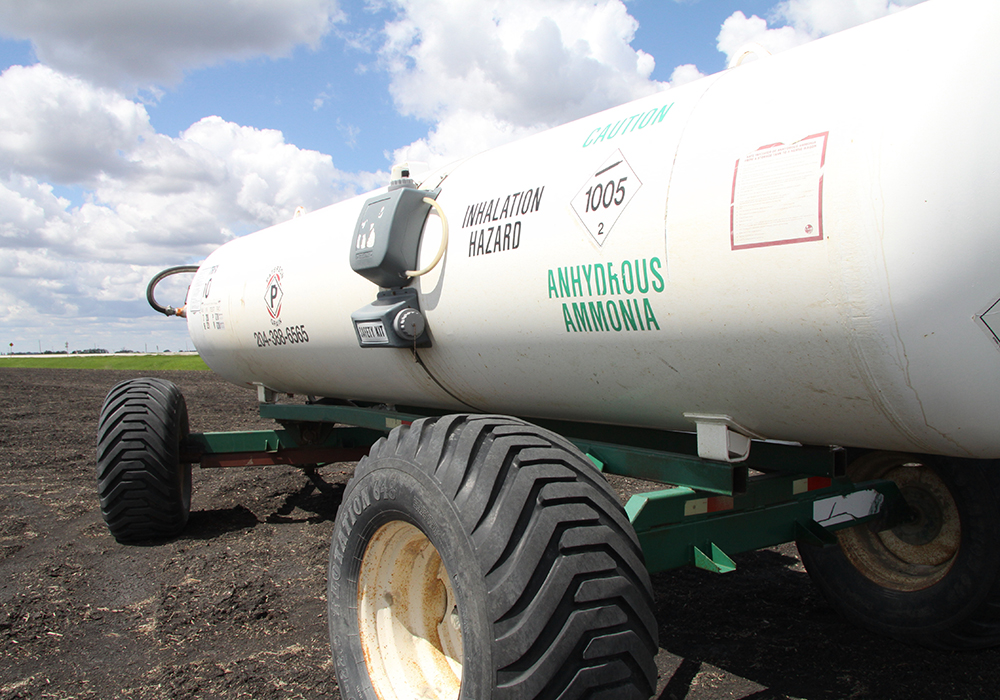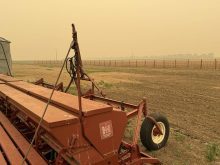Majority of prairie farmers say goal to reduce fertilizer emissions by 30 percent by 2030 isn’t achievable without yield loss
An independent survey found that 83 percent of western Canadian farmers disagree with the federal fertilizer emissions reduction target.
Greg Dunlop, president of iFusion Research, conducted the survey on his own after watching controversy build online and in farm media.
He said he was curious to know what farmers actually thought.
He surveyed 546 farmers from iFusion’s database in the three prairie provinces on Aug. 29 and said the degree to which farmers disagree with the target was surprising. The results were weighted by province based on population of farms, and he also compared soil zones.
Read Also

Saskatchewan puts crown land auction on hold
Auctions of Saskatchewan crown lease land are once again on hold.
Of the 83 percent opposed, 72 percent are strongly opposed.
“That was quite a stark rebuke, I guess, of the job that the government has done on communicating,” he said.
Farmers in the brown soil zone indicated the strongest disagreement with the target at 82 percent.
About half of respondents believed that fertilizer emission estimates ignore actual farm practices but 32 percent didn’t know. About 81 percent use synthetic fertilizer, and the highest use was in Manitoba.
The survey explained to participants how the federal government estimates emissions: it estimates fertilizer use by the crop times a regional emission factor mostly based on weather, and fertilizer use is based on provincial fertilizer shipments, recommended rates by crop and the crop acres.
It asked, if this calculation is used, how achievable is a 30-percent reduction without reducing yields? Eighty-two percent said it was not achievable, 10 percent said it was and eight percent were not sure.
The survey also asked farmers who use synthetic fertilizer about familiarity with the 4R Nutrient Stewardship program to better manage fertilizer applications. Half of the participants said they weren’t familiar with it, and 43 percent of those less likely to know about it are located in the brown soil zone.
Once they were told how 4R works, participants were asked if their opinion on whether the reduction is achievable would change if the effects of 4R are included in the emissions calculation.
The percentage who said not achievable dropped to 57 percent and those who said it was achievable grew to 26 percent, while 17 percent weren’t sure.
Finally, 73 percent said they believed the government would force mandates such as caps on fertilizer use if progress isn’t made toward the reduction target but 21 percent weren’t sure. Again, farmers in the brown soil zone were most skeptical with 87 percent saying yes.
Dunlop also asked a political question in the farmer survey to see how that might impact the issue. It found 73 percent support for the federal Conservatives overall.
“There seems to be a general mistrust with farmers of what the central government is doing with this,” he said. “If you look at the discussion document, they put out a lot (that) seemed to be aimed to wheat growers and growers in Western Canada more than anywhere else.”
Dunlop said sentiments toward the federal government likely come from other things that have happened, such as the vaccine mandates, lockdowns, protest convoys and fuel standards.
Because farmers are “fiercely independent” they don’t like the top-down approach, he suggested.
Even a recent outcry over federal dugout testing in Saskatchewan added to the angst, said Dunlop. Many rural residents said federal officials entered their property without permission and provided no immediate information on why they were there.
“It just sort of builds to a narrative that they feel that they’re not being listened to or not involved in the process,” he said.
Asked if the survey results would be different if conducted in Eastern Canada, Dunlop said there would be disagreement but likely not as much. That is because the emissions reduction focuses on synthetic fertilizer.
He said there appears to be no concern about manure application, which is prominent on the many dairy farms in Quebec and Ontario where they grow more feed corn.
“When you look at the issue in the Netherlands, that’s the issue, not so much synthetics,” he said, referring to farmer protests over mandated fertilizer use reduction.
Dunlop said the federal government would have done better to follow a model used by the Canadian Corn Pest Coalition.
The coalition formed in 1997 with the introduction of Bt corn to manage best practices and prevent insect resistance to the technology.
It includes all the relevant stakeholders and every second year Dunlop does a study on its work.
“The progress that has been made on a voluntary set of best management practices has, to me, been quite stellar,” he said.
The same principle could apply with fertilizer, he said, and as new technologies and practices are developed, they will be adopted.
















